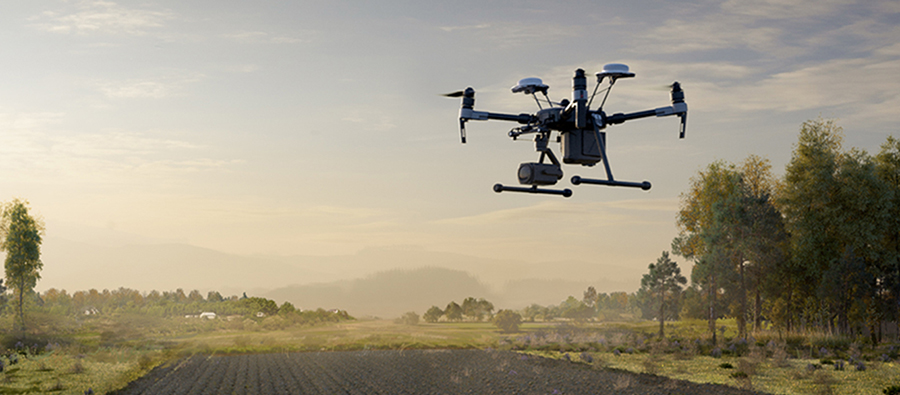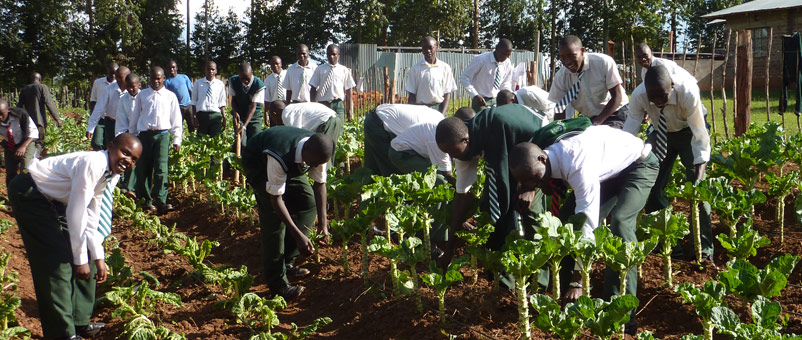By Ranveer Chandra, Chief Scientist, Azure Global, Microsoft.
In Davos this week, the world’s elite will gather to debate ways to navigate the Fourth Industrial Revolution. A major component of Globalization 4.0 (as the World Economic Forum has dubbed it) is the high-tech digital revolution that is changing the way live day to day.
Data has been essential to farmers’ work for generations. Weather patterns, historical crop yield data and market information all helps to inform their planting cycle, treatment and watering plans. Farmers have also been many of the first technology “early adopters,” in many parts of the world, enabling them do their job with greater efficiency.
Yet, the 21st century breakthrough of broadband Internet has created a vast digital divide. Many farmers that are as yet “unconnected”, are barred from the opportunity to benefit from the big data revolution advancing business globally.
With the proliferation of Internet connectivity and data intelligence from AI algorithms, Internet of Things (IoT) devices can sense and respond to their environment in real time. For over a decade, I have been researching ways to connect the farm, and bring the world of agriculture into the data economy.
Prior studies by the FAO have shown that crop yields need to more than double by 2050, compared to 2010 levels, to meet growing demand. Couple that growth with receding water levels, the shrinking of arable land, the degradation of environments, and the need for nourishing food, and the world has a nearly impossible problem to solve.
With Internet-connected sensors, and advances in Computer Vision and AI we can understand precisely how the land is behaving. This can be used to optimize yield and reduce the use of resources like water and chemicals by taking out the guesswork in today’s farming operations.
Roughly five years ago, I set out to figure out how to create a system to unblock the data problem.
Unblocking the Connectivity Problem
Over-the-air broadcast TV is not widely available in rural areas. It’s common to see several stations of static grey, white and black-dotted screen. This is what we call TV white spaces, and can be used to transmit data using wireless networking. This can be a workable alternative to Wi-Fi in remote places.
TV white space devices can determine which TV channels are unused at a given location, and transmit Wi-Fi like signals on each channel such that it doesn’t interfere with transmissions on neighbouring TV channels. Typically, more than 20 TV channels are available in rural areas, which can carry several 100 Mbps of data.
Microsoft is the first to develop a TV white spaces radio to enable Wi-Fi-like connectivity. We have also used this technology to connect high-schools, hospitals and of course, farms in the US, as well as in emerging economies, such as Africa and India.
Precision Agriculture with Data: From the Ground to the Sky
Our FarmBeats project has also built a full solution that smallholder farmers can use to interpret soil activity and microclimates. This helps overcome investment in expensive sensors and equipment.
The project takes a ground and aerial approach, using data from low-cost sensors, drones, and satellites, and applies vision and machine learning algorithms to create a digital heat map. This gives farmers prescriptive action they can take based on soil moisture, temperature and microclimates.
Ground sensors have been available to the agriculture community for over a decade. While a powerful tool, ground sensors can cost thousands of dollars. We needed to find a way to use fewer, low-cost sensors but still understand what the farm is doing. This is where drones and cloud intelligence using AI capabilities such as vision, deep learning and other machine learning techniques come in.
We developed AI models to predict sensor values, such as soil moisture values, from a few sensors to all other parts of the farm by combining data from ground sensors and aerial imagery from drones. From the sky, the drone is using this cloud intelligence and advanced aerial mapping capabilities to create a digital map as seen below.
We developed AI models to predict sensor values, such as soil moisture values, from a few sensors to all other parts of the farm by combining data from ground sensors and aerial imagery from drones.
Edge computing is a term for facilitating data processing that takes place as close to the device as possible to reduce latency and improve ability to move from insights to action quickly. The drone or a camera in this scenario is an intelligent edge device, and the ability to act quickly based on these images cannot be understated for a farmer.
For example, a farmer may want to create an alert for animals that may intrude on their farms and harm their crops or livestock. With the drone and other camera sensors taking visual inventory of the farm, farmers can process the video much more quickly to enable real-time actions to be taken.
In short, FarmBeats is an end-to-end IoT system that enables seamless data collection for agriculture, and then applies AI and Machine Learning techniques to turn this data into actionable insights that can power precision farming.
Looking Ahead to the Next Generation of Digital Farming
Our vision is to empower every farmer with affordable digital agriculture techniques, to take confusion and guesswork out of farmers’ daily activities and improve yield to help feed the world. For this to happen, we need to scale the connectivity opportunity with help from the spectrum regulators so that TV Whitespaces can be adopted worldwide.
Microsoft has also made a commitment with the Airband Initiative to connect 3 million rural Americans to broadband by 2022, with TV Whitespaces as a key enabling technology.
The second barrier to entry is cost. Project FarmBeats has taken steps to address this by lowering costs of sensors, drones and cloud technology for smallholder farmers to benefit.
For widespread impact, we need to do more. Just as local governments have subsidised agricultural equipment, we believe technologies like FarmBeats for precision agriculture should also be considered an essential tool and subsidised for use.
Lastly, we need to address the resource and education gap in emerging markets. These farmers may not have smartphones or the education and training to interpret the data. We need to create advisories that accompany the data, to suggest recommendations needed based on the weather patterns or soil activities.
The future of farming hinges on solving the data problem with connectivity and resources to collect and interpret the data. We need to collectively take steps today, which starts with underscoring the urgency of connectivity in rural areas, working with technology providers and local governments to drive down the cost of data collection sensors and programs to advance education around using digital farming techniques globally.
Featured photo credit: Microsoft



